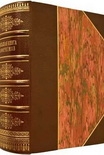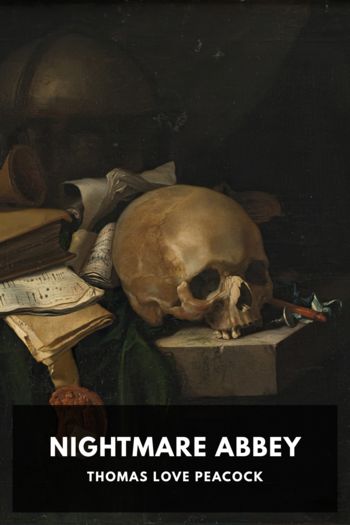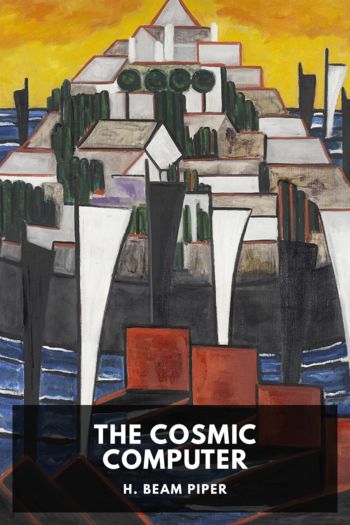Gluck, Diana Souhami [good novels to read in english txt] 📗

- Author: Diana Souhami
Book online «Gluck, Diana Souhami [good novels to read in english txt] 📗». Author Diana Souhami
Gluck would show her paintings when she finished them to the Plumpton villagers. Early in November 1942, forty-nine people came up to Millers Mead to see a small landscape of Blackdown, the highest point in Sussex. Edith and Nora Heald, who lived in the Chantry House, Steyning, journeyed over specially. Nora was editor of The Lady and Edith, her younger sister, a wellknown journalist. They spent three hours with Gluck and she described it as ‘a good quiet time’. This was the beginning of her friendship with Edith, with whom she was soon to live for the rest of her life. Nesta had a bad boil and was in bed all day, so Gluck took the picture down to show her at the Mill House after the sisters left.
Gluck disliked abstraction and ‘isms’ in art. She showed her work only in solo exhibitions and shunned comparison with other painters. She saw no anomaly in painting convolvulus with the sound of air raids blasting in the distance. She was unafraid of death and unswerving in her painting style. ‘If you honestly have the sort of vision that sees blue and pink trees or whatever the diversion might be’ she wrote in her ‘Book’,
then go to it. If you don’t it is as if seeing the truth you preferred to tell a lie.… When I look at some of these patchy, painty modern landscapes I get the strong sensation of the painter having worked as hurriedly as he could to remove any suspicion that he could be guilty of such a solecism as to see a tree as a tree. The oak must bend to the blast of his ‘ism’ or snap. It usually snaps.
So, while Graham Sutherland painted red landscapes and black landscapes, David Bomberg mauve and orange landscapes and underground bomb stores, Henry Moore frail figures sheltering from bombs in underground shelters and Paul Nash bleak, unpeopled, desolate warscapes, Gluck painted the most shortlived of wild flowers, violets and convolvulus, and the people whom she knew. It was her personal world beyond the reach of politics. The war went on outside as Virginia Woolf, living a few miles away at Lewes, noted in her diary: ‘“They’re at it again” we say as we sit, I doing my work, Leonard making cigarettes. Now and then there’s a thud. The windows shake. So we know London is raided again.’5
Gluck was no pacifist. She wanted to make a contribution to the ‘war effort’. Kenneth Clark, then Director of the National Gallery, thought she might work for the War Artists Committee which, financed by the Ministry of Information, gave commissions to artists for war paintings. ‘In her Brueghel manner,’ he wrote to Wilfrid Greene (2 May 1942) who was asking about canvases for her, ‘there might be many scenes of war-time life that would be valuable to us.’ He also wrote directly to her (2 June 1942) suggesting that her crowd scenes would be appropriate or a scene inside a British restaurant. Gluck wanted such commissions and sent off photographs of her work for the Committee’s scrutiny: ‘I am interested in rough working types,’ she wrote to Clark, ‘or as seen in contrast with others of a different class. I do not know what part of the war effort might give this, nor if it would be possible for me to get a permit to see the more dramatic type of war factory or docks, such as have, for instance, very large machinery that dwarf the figures serving there.’
The Committee did not employ her, but sent her a general permit for sketching freely out of doors. She travelled no further for inspiration than the nearby Home Guard canteen. In ‘Canteen, Plumpton’ soldiers drink tea, play billiards, smoke and lounge around in the cold. For another picture Gluck went to the Women’s Institute, Plumpton, and painted the awesome respectability of certain county women in ‘In England’s Green and Pleasant Land’. The thickankled conductor has split her seams trying unsuccessfully to inspire her impassive choir with Blake’s Jerusalem. In front of them lie cups of tea, the true focus of their vision, and on the walls behind them a map of the war-torn world. Gluck’s society portraits and paintings of the Cochran reviews linked her work to the twenties, and her white flowers to the thirties. These Home Guard scenes capture something of the local spirit of villagers during the war years.
The last painting which linked directly with Nesta’s life was of her mother, Ethel Sawyer. Gluck’s second picture of her showed her as she lay dying in 1943. The next year Gluck and Nesta were to part. The painting was the flip side of the YouWe profile. Resemblance between mother and daughter is strong, but now the eyes are closed, the face tired of life, creased with pain, all vision gone. Somewhere in Gluck’s psyche it had registered that Eternity in love is hard to find. ‘Nothing but happy pictures since YouWe’, she had written to Nesta in 1936. Seven years later she was painting the death of her lover’s mother.
THIRTEEN
THE WAR WITHIN
Gluck’s personal battle, during the war years, was with her trustees over the management of her affairs. She wanted autonomy and to handle her own money. There was nothing she hated more than being told what to do and when to do it. She presented herself as a man, a person of power, authority and strength. To The Family this was a masquerade. She was a woman, a girl, and by their social definition dependent and with no authority. From her father’s point of view, when he drew up the terms of her inheritance, she was his difficult and rebellious daughter. He wished to ensure that she would always have a roof over her head and adequate funds which she could not squander. Had she been, in





Comments (0)